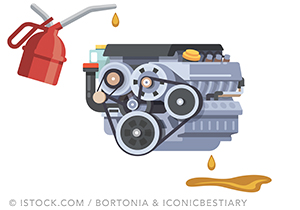
Fam Pract Manag. 2023;30(1):29
USE THE “SHARE” APPROACH TO INVOLVE PATIENTS IN DECISION MAKING
Physicians and patients sharing in health care decisions is an integral part of primary care, but doing so in a comprehensive, repeatable way can be difficult. Every decision is different, every patient has different values and preferences, and it's not always easy to determine if a patient clearly grasps the risks and benefits of a given decision.
The Agency for Healthcare Research and Quality (AHRQ) has developed a five-step process, the SHARE approach, for facilitating shared decision making between clinicians and patients. The steps are as follows:
Seek your patient's participation: “Now that we have identified the problem, it's time for us to think about what to do next. I would like your input.”
Help your patient explore and compare treatment options: “Here are some choices we can consider. Let me tell you what the research says about the benefits and risks.”
Assess your patient's values and preferences: “As you think about your options, what's important to you? What risks worry you most?”
Reach a decision with your patient: “Would you like some more time to think about the treatment choices, or are you ready to decide?”
Evaluate your patient's decision: “If you don't feel things are improving, please schedule a follow-up visit so we can plan a different approach.”
CHOOSE WISELY WHEN IT COMES TO LOW-VALUE ADMINISTRATIVE PRACTICES
Since 2012, the Choosing Wisely campaign (https://www.choosingwisely.org) has helped clinicians and patients choose services that are high-value and avoid those that may be unnecessary or harmful. This same principle should be extended to administrative practices, such as EHR documentation and risk-management requirements. With the health care workforce increasingly stretched thin and stressed out, it's important to identify which administrative tasks are low-value and could be changed or eliminated. This process — dubbed “Getting Rid of Stupid Stuff” — involves three steps:
“Crowdsource” ideas for administrative reform by taking nominations from physicians and staff for tasks that are unnecessarily burdensome, don't improve clinical quality, don't address outcomes patients care about, or are duplicative or wasteful.
Determine which items can be changed or abandoned without violating external regulations (versus which would require regulatory reform), and take action to relieve burden.
Join with other stakeholders to lobby payers or regulators to change burdensome external mandates (e.g., accreditation, performance monitoring, or insurance regulations).
By identifying low-value administrative tasks that are causing burnout, and then eliminating or changing them, organizations can save physicians and staff significant time and stress.
TRY THIS METAPHOR FOR IRON-DEFICIENT PATIENTS

When discussing the workup for iron-deficiency anemia in a male or non-menstruating female, I often tell patients that simply replacing iron is not enough. We must also look for the cause of low iron.
I have an analogy that usually helps drive home this point: Imagine your car's oil (iron) is low for some unknown reason. Replacing the oil will help temporarily, but you must find the source of the oil leak within the engine if you want the car to continue running well.
In this case, that means examining gastrointestinal organs to exclude possible sources of the leak (bleeds) that could be causing anemia. I find patients are more willing to undergo the workup once they understand the rationale.
